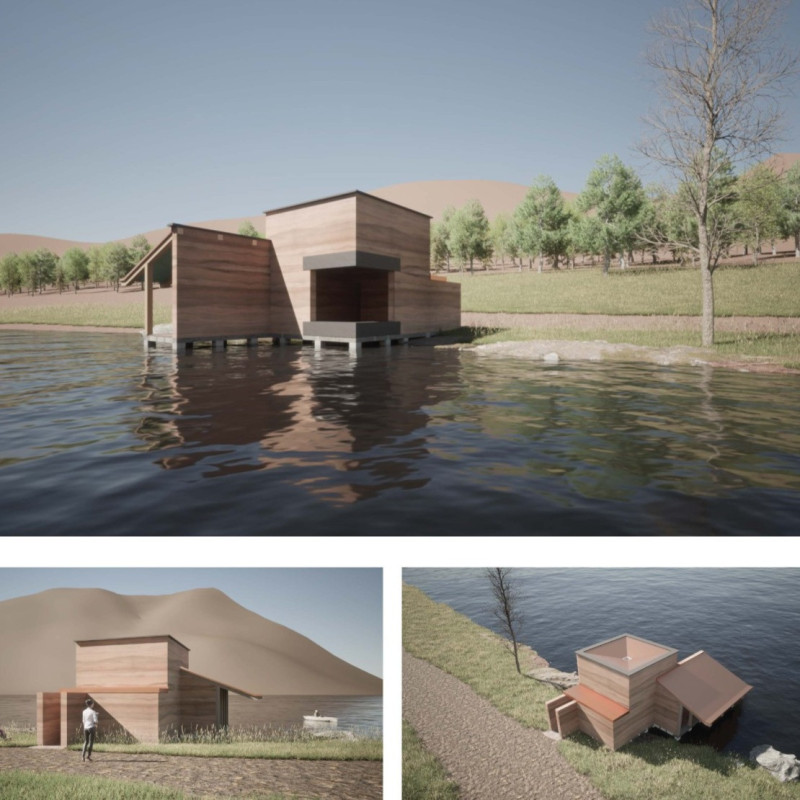5 key facts about this project
The rammed earth pavilion is located in Weissenssee, Austria, positioned between a serene lake and striking mountains. It serves as a space for reflection while exploring the life cycle of rammed earth as a building material. The design concept reflects the journey of this material, showcasing its transformation from raw form to refined structure, and eventually to decay. Visitors experience this narrative through a thoughtfully planned sequence of spaces.
Design Intent
Occupants are guided through three distinct areas, each designed to evoke specific feelings. The entrance presents a dense, solid façade that draws people in. As visitors enter, they find themselves in a narrow, cave-like environment. This initial experience creates a sense of curiosity and prepares individuals for the journey ahead.
Spatial Experience
After passing through the entrance, visitors reach a central space filled with light. Sunlight pours in, brightening the area from a carefully positioned window that frames views of the surrounding mountains. This openness creates a connection between the interior and the landscape outside, making visitors feel both refreshed and uplifted.
Decay and Impermanence
As people move toward the west-facing opening that leads to the pier, the theme of decay becomes apparent. A temporary rammed earth wall is present in this section, specifically designed to erode over time. Rainwater from the roof is directed onto this wall, promoting its gradual breakdown. This feature prompts reflection on the fleeting nature of materials and life itself.
Material Considerations
The pavilion incorporates locally sourced materials such as earth, stone, and timber. These choices reinforce the connection to the site and enhance the overall aesthetic. The focus on sustainable practices and the historical significance of rammed earth enrich the overall experience, making it relevant to modern architectural discussions.
Observing the pavilion, one notices how light and shadow dance across the textured surface of the rammed earth walls. This creates a visual experience that changes throughout the day. The building's exterior interacts with the landscape, highlighting the relationship between the constructed space and its natural surroundings.



















































